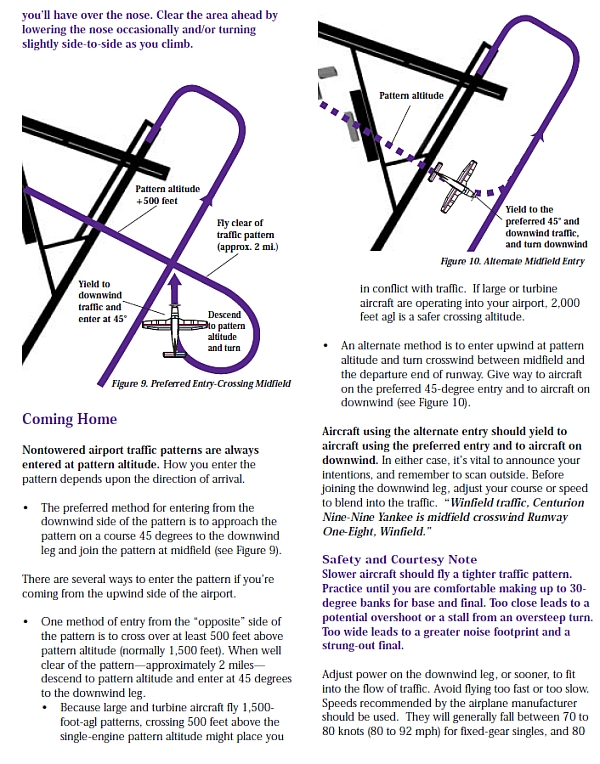signu127
Pre-takeoff checklist
For a wide variety of reasons, the one place you don't want to be is inside the traffic pattern at TPA. Whatever leg of the pattern you join, join it from the outside, not the inside. Trying to join the downwind from the inside means you'll be belly up to both traffic already on the downwind from closed traffic and traffic joining from the 45. If you find a conflict in this situation, you have nowhere else to go. If you want to overfly the field to look at the wind sock or something, please do that at least 500 above the highest TPA, then continue across until clear of the pattern (2-3 miles out) before descending turning back to join the 45 leg at TPA. If you don't want to do that, join the crosswind leg at the normal point about 3/4-1 mile beyond the departure end of the runway at TPA. This will give you a good view of anyone on the upwind or climbing out so you can maneuver to avoid them during your entry, and there will be nobody to whom you will be belly-up.
Question about this...when doing a fly over to look at the windsock how do you usually announce that on that radio?
thanks





 They're probably mostly painted yellow with blue stripes too.
They're probably mostly painted yellow with blue stripes too.